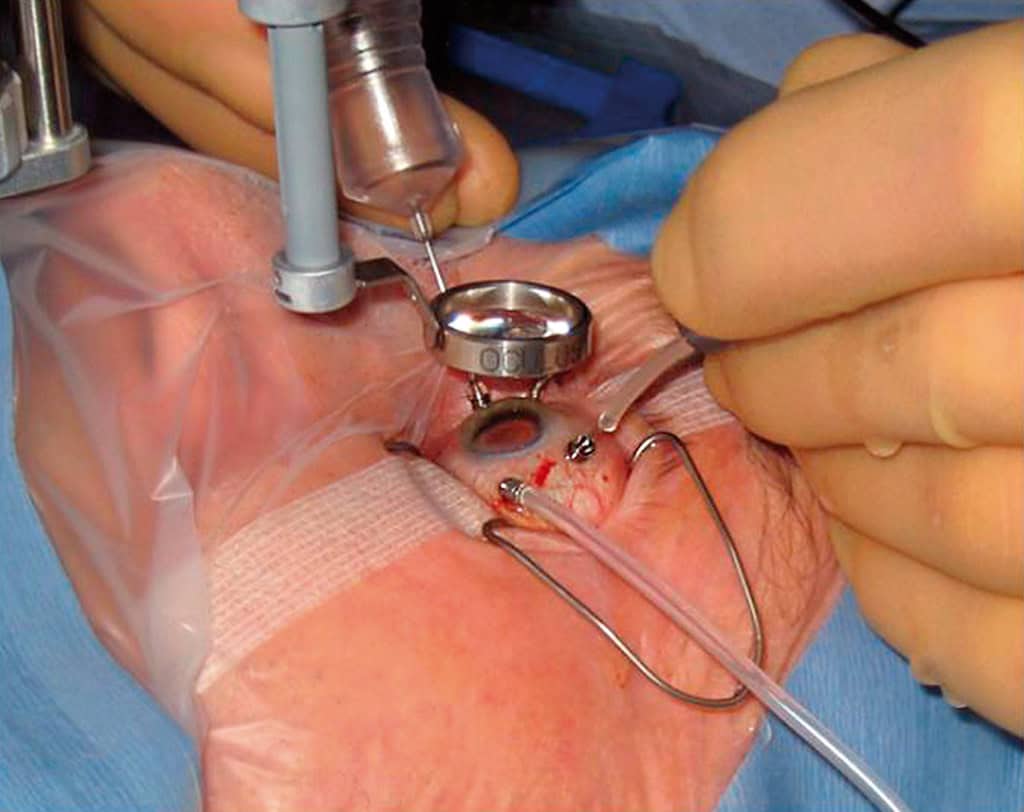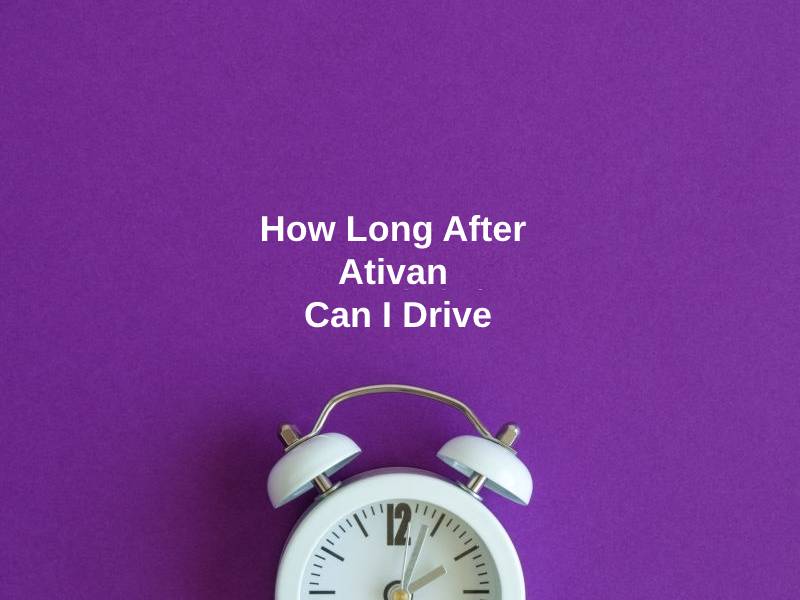Exact Answer: 6 Weeks
When various operations of retinal conditions take place, it is hard for the surgeons to reach the retina. Thus, during times like this, a vitrectomy is undertaken. It is a surgical procedure performed by a surgeon to remove the vitreous humor (a kind of fluid), which fills up the eye cavity.
This surgery is necessary if the vitreous humor has developed an infection, or is filled with clumps of tissues, which are called floaters. As this fluid is removed during the surgery, it needs to be replaced with something. Hence, after the surgery, the fluid is replaced by a saline solution or gas bubble, which also is capable of holding the retina to the back wall of the eye.

How Long After Vitrectomy Can I Drive?
| Driving If Urgent | After 2 weeks |
| Driving After Full Recovery | After 6 Weeks |
We are only able to see properly when the light reaches the retina in our eyes. But when the vitreous fluid develops an infection or floaters, it creates obstacles for this light to reach the retina. Thus, as a result of this, our vision gets impaired, i.e., we are not able to see properly. Vitrectomy is the surgery done to treat such a condition by removing and replacing this fluid. This surgery not only allows doctors to reach the retina, but also the macula, which is placed in the center of the retina. A small hole in the macula can also cause problems to our vision. But after the vitrectomy surgery, doctors can treat this problem as well.
Vitrectomy also allows doctors to treat various other medical conditions as well. These medical conditions mainly include infections, internal bleeding of the eye, injury at the retina, or cataracts. This surgery also helps to treat a condition in which your retina has moved from its original place.

After the surgery is done, for about the next 48 hours, you are supposed to take full rest. You should avoid using any kind of machines, drink alcohol, smoke, or consume any sleeping tablets. And for the next few days, you should strictly avoid driving or exercising.
You are not supposed to drive until you are fully recovered. Usually, vitrectomy surgeries take almost 4 to 6 weeks for recovery. This is because the gas bubble which is used to replace the vitreous fluid may still have a longing effect on the eye for few weeks. Hence, it is best recommended to not drive for the next 6 weeks. But if there’s an urgency, then after consulting the doctor, you may be able to drive 2 weeks after the surgery.
Why does it Take That Long to Drive After Vitrectomy?
Vitrectomy is of two types, i.e., the anterior vitrectomy and the pars plana vitrectomy. The anterior vitrectomy is the procedure in which the vitreous humor is removed because they are tangled with an intraocular lens. The pars plana vitrectomy is the surgery that involves various operations performed to remove all the vitreous humor. These surgeries are mostly performed on the inner part of the eye.
Before 8 hours for the surgery, the doctors will suggest you not to consume food and water. How long the surgery is depending on the condition being treated. For the surgery to begin, any one of the two anesthesia is given. You can either get local anesthesia which will make your eye go numb, or you can take general anesthesia which will put you unconscious throughout the surgery.
As the surgery begins, the first cut is made at the outer layer of the eye and then to the white part, which is called the sclera. After that, the vitreous humor is removed with the help of a microscopic cutting tool. As the fluid is being removed, your eye will be filled with another liquid which is much similar to the normal eye fluid. After removing the fluid, the main condition of the retina is finally treated. If you have any scar, infection, or debris, it will be removed. The vitreous humor will now be replaced with a saline, gas bubble, or silicone oil. Then an antibiotic will be applied to your eye and the eye will be covered by a patch.

If a gas bubble is used as a replacement, it takes about 6 weeks to recover. For the recovery, you will be prescribed some antibiotic drops. These will protect you from any kind of infection or inflammation. You might even be suggested to lay down your face so that your eye can recover properly.
Conclusion
It is observed that almost 90% of vitrectomy surgeries are successfully done. But sometimes complications do arise. Such complications include bleeding at the eye, pneumonia, detached retina, vision impairment, and scar tissue formation.
Although our eye is not much affected when the vitreous humor is removed, it is necessary to replace the fluid. If this fluid is replaced by a saline solution or a gas bubble, both of them are similar to the normal eye fluid. If silicone oil is used for replacement, then you will be having another mild surgery in the next few months to remove this oil. But either way, you are not supposed to drive until you are fully recovered, i.e., for 6 weeks.





















I understand that the recovery period is crucial for vitrectomy. However, 6 weeks seems lengthy for not driving. But the detailed explanation of the process itself is enlightening.
The recovery duration might seem lengthy, but it’s vital for ensuring the safety of the individual and the effectiveness of the procedure. It’s a necessary precaution.
It’s a matter of prioritizing comprehensive healing. 6 weeks seems reasonable considering the specific elements of the surgery and post-operative care.
The recovery process for vitrectomy after-care is certainly intricate, and the logic behind abstaining from driving for 6 weeks is quite comprehensive. This article offers clarity on that front.
Absolutely, detailed insights into recovery expectations are essential for patients and their caregivers, and this article accomplishes that effectively.
The recovery duration is certainly a crucial aspect of vitrectomy, and this article provides detailed explanations for the care involved. It outlines the necessity of the 6-week period before driving effectively.
The lengthy recovery period might seem challenging, but the emphasis on long-term eye health and comprehensive healing makes a compelling case for it.
The recovery phase might be less intuitive to many, but this article does well to shed light on the reasons behind the 6-week period needed before driving.
I never realized how complex the process of vitrectomy is, but now it’s clear to me. It’s important to understand the recovery process for such a surgery, and this shed a light on the duration needed for driving after the surgery. Very informative content.
I agree, having detailed information about vitrectomy surgery is crucial for anyone considering it.
The 6-week recovery period might pose inconveniences, but the reasoning behind it is enlightening. It emphasizes the precision and delicacy of eye-related procedures.
Detailing the reasons behind the 6-week period for recovery sheds light on the sensitivity of post-vitrectomy care, underscoring the significance of patience in the healing process.
The comprehensive explanation of the recovery duration and the underlying reasons provide a balanced perspective despite being an inconvenience.
I’m surprised to learn that it takes 6 weeks to recover before being able to drive. This makes me appreciate the complexity and sensitivity of the eye’s recovery process. As much as it might be inconvenient, it’s necessary for proper healing.
For safety reasons, it’s logical to undergo a lengthy recovery period. It’s a matter of prioritizing long-term eye health over short-term convenience.
Absolutely, the recovery period should not be underestimated. Impatience could lead to adverse effects on the healing process.
The detailed explanation about vitrectomy was very educational. It’s interesting to see the depth of preparation and care involved in the process, especially the recovery protocol for driving.
I appreciate the emphasis on the post-surgery care and the reasoning behind the 6-week recovery period before driving.
This article provides valuable insights into the kind of cautious steps necessary for post-surgery care, particularly with such a delicate organ as the eye.
This article effectively communicates the intricacies of vitrectomy and the care needed during recovery. The emphasis on caution when driving after the surgery is particularly insightful.
I agree, the post-operative care details, including the period needed to abstain from driving, are important for patients to understand. This article tackles that effectively.
The in-depth explanation of vitrectomy and the recovery duration is quite informative. The emphasis on the 6-week recovery before driving is certainly a key takeaway from this article.
Understanding the complexities of post-surgery recovery is essential, and this article leaves no room for ambiguity in that regard.
The recovery period before driving might appear extensive, but the detailed rationale behind it in this article offers a balanced perspective.
The post-surgery recovery for vitrectomy is indeed precise and extensive. The detailed reasoning behind abstaining from driving for 6 weeks is communicated effectively in this article.
The recovery phase might seem extensive, but the detailed explanations offered in the article provide valuable insights into the reasoning behind such a timeline.
A comprehensive understanding of post-vitrectomy care is indispensable, and this article delivers on that front.